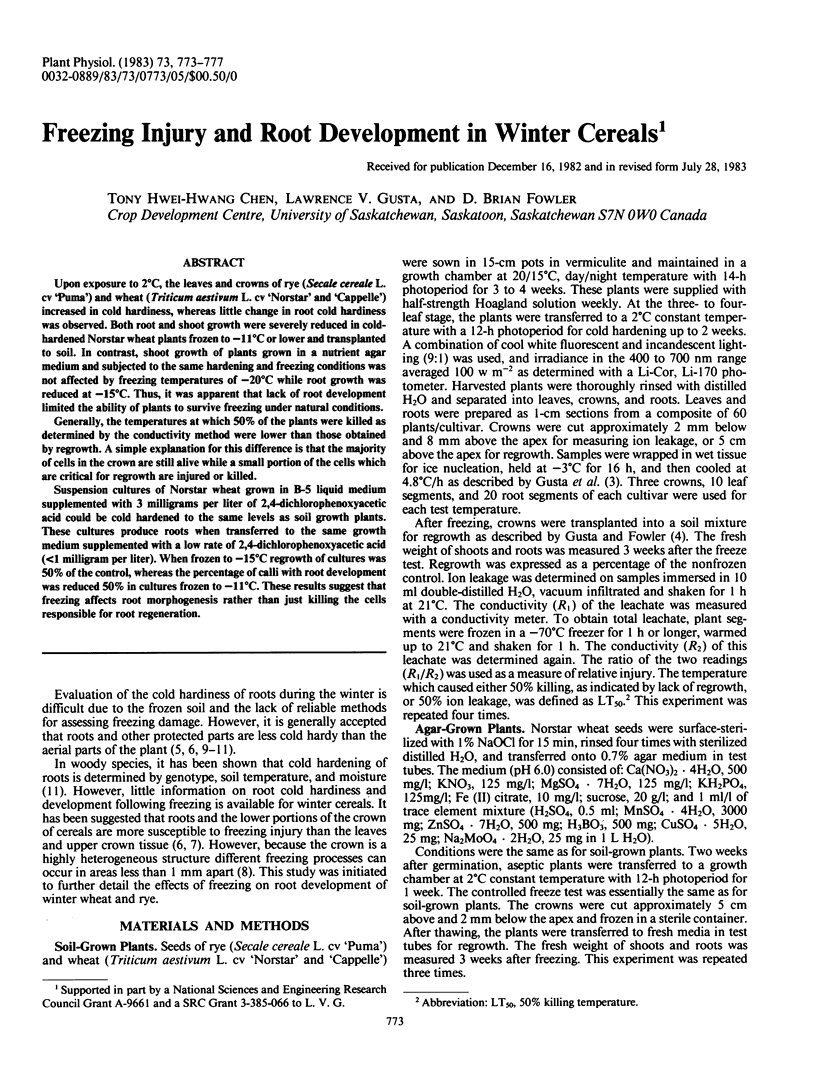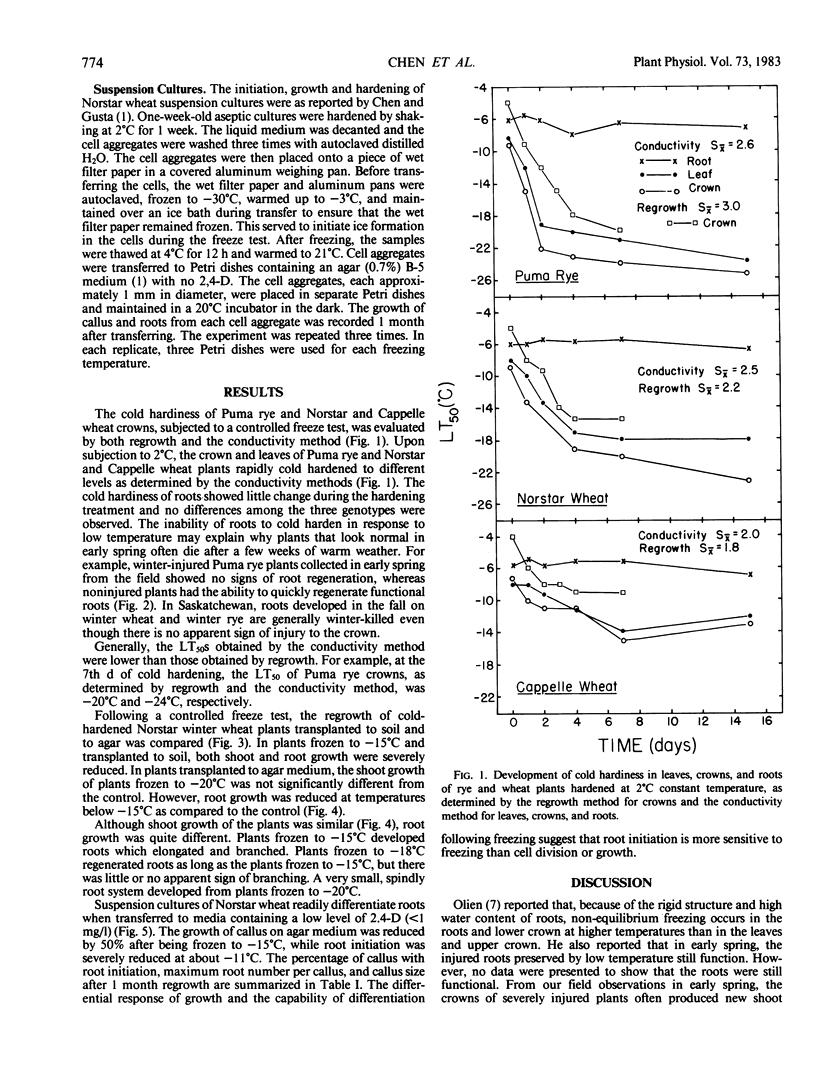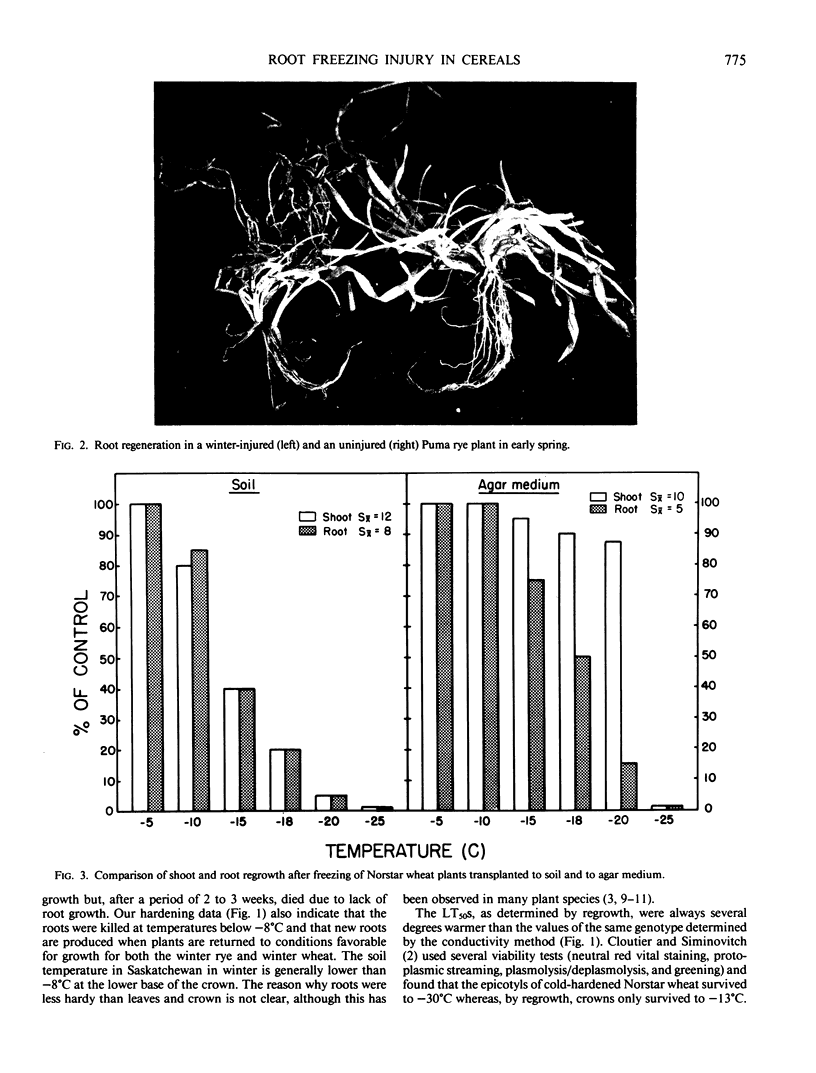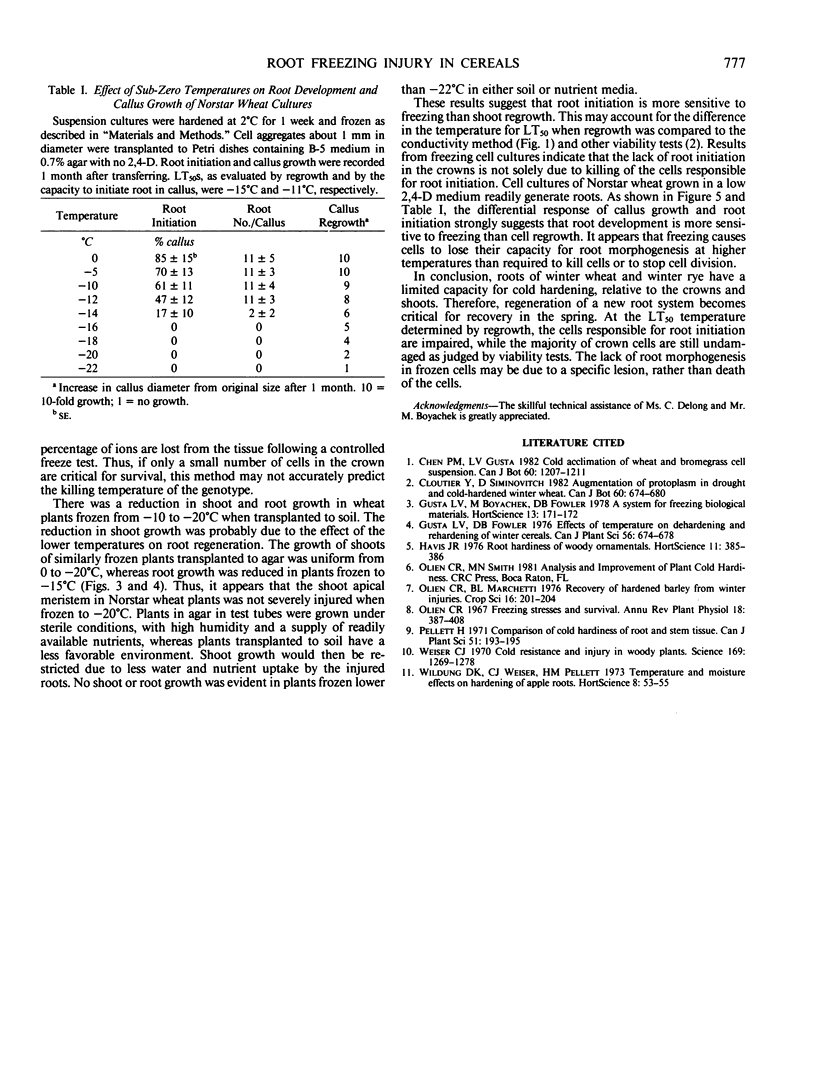Abstract
Upon exposure to 2°C, the leaves and crowns of rye (Secale cereale L. cv `Puma') and wheat (Triticum aestivum L. cv `Norstar' and `Cappelle') increased in cold hardiness, whereas little change in root cold hardiness was observed. Both root and shoot growth were severely reduced in cold-hardened Norstar wheat plants frozen to −11°C or lower and transplanted to soil. In contrast, shoot growth of plants grown in a nutrient agar medium and subjected to the same hardening and freezing conditions was not affected by freezing temperatures of −20°C while root growth was reduced at −15°C. Thus, it was apparent that lack of root development limited the ability of plants to survive freezing under natural conditions.
Generally, the temperatures at which 50% of the plants were killed as determined by the conductivity method were lower than those obtained by regrowth. A simple explanation for this difference is that the majority of cells in the crown are still alive while a small portion of the cells which are critical for regrowth are injured or killed.
Suspension cultures of Norstar wheat grown in B-5 liquid medium supplemented with 3 milligrams per liter of 2,4-dichlorophenoxyacetic acid could be cold hardened to the same levels as soil growth plants. These cultures produce roots when transferred to the same growth medium supplemented with a low rate of 2,4-dichlorophenoxyacetic acid (<1 milligram per liter). When frozen to −15°C regrowth of cultures was 50% of the control, whereas the percentage of calli with root development was reduced 50% in cultures frozen to −11°C. These results suggest that freezing affects root morphogenesis rather than just killing the cells responsible for root regeneration.
Full text
PDF




Images in this article
Selected References
These references are in PubMed. This may not be the complete list of references from this article.
- Munday B. L., Smith D. D., Frenkel J. K. Sarcocystis and related organisms in Australian Wildlife: IV. Studies on Sarcocystis cuniculi in European rabbits (Oryctolagus cuniculus). J Wildl Dis. 1980 Apr;16(2):201–204. doi: 10.7589/0090-3558-16.2.201. [DOI] [PubMed] [Google Scholar]
- Weiser C. J. Cold Resistance and Injury in Woody Plants: Knowledge of hardy plant adaptations to freezing stress may help us to reduce winter damage. Science. 1970 Sep 25;169(3952):1269–1278. doi: 10.1126/science.169.3952.1269. [DOI] [PubMed] [Google Scholar]





